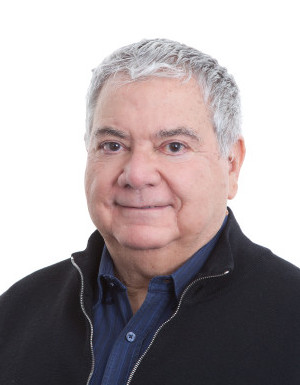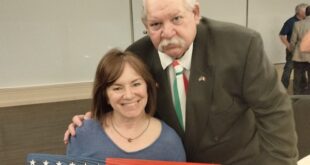 This month we highlight the distinguished career of architect John Vinci. Subjects for this column come to the attention of the author in various ways. An article in the Chicago Tribune about the controversial three sets of copper-clad wood exterior doors at the cost of nearly $670,000 in our state capitol brought this month’s subject to our attention — John Vinci.
This month we highlight the distinguished career of architect John Vinci. Subjects for this column come to the attention of the author in various ways. An article in the Chicago Tribune about the controversial three sets of copper-clad wood exterior doors at the cost of nearly $670,000 in our state capitol brought this month’s subject to our attention — John Vinci.
The article read as follows:
“Revenge is sweet, but winning design awards isn’t bad either. Just ask the architects of the much-maligned restoration of the Illinois Capitol’s west wing.
“A year ago, citing the state’s pension funding crisis, Gov. Pat Quinn blasted the restoration’s most controversial detail — three sets of copper-clad wooden exterior doors that cost nearly $670,000.
‘We don’t need to have the Palace of Versailles as our state Capitol,’ Quinn said.
“Just recently, the designers of those doors, Chicago architects Vinci-Hamp, were honored at the annual awards program of the Chicago Chapter of the American Institute of Architects.
“At the same event, the firm’s founding partner, John Vinci, received a lifetime achievement award for such work as the salvaging and reconstruction of Louis Sullivan’s Chicago Stock Exchange trading room at the Art Institute of Chicago.
“And giving Vinci, something of an architectural triple crown, the Chicago-based historic preservation advocacy group Landmarks Illinois on November 1 recognized the Victoria-era splendor of the Capitol’s entire west wing restoration as its project of the year.”
“John Vinci, FAIA, like many of us, is almost a cliché in this community, the success of a child of immigrants. John is the youngest (mid-seventies) of seven children. Both of his parents were born in Nicosia, Sicily, and he grew up in the Saint Mary Incoronata parish (2800 S. Wells Street in Chicago), where he attended grammar school. Interestingly, the first order of Italian priests in Chicago, the Scalabrini fathers, ran the parish. Like many of us, he attended Catholic high school, St. Rita High School, and did his undergraduate work at the Illinois Institute of Technology, graduating in 1960. He is a registered architect in Illinois, Michigan, Missouri and Wisconsin.
“Vinci has taught the history of nineteenth and twentieth century architecture at the Illinois Institute of Technology (1972-1992) (2000), and at Roosevelt University (1970-1972). In recognition of his professional activities, Mr. Vinci was elected a fellow of the American Institute of Architects in 1990.
“Vinci was privileged to be selected to design the National Italian-American Sports Hall of Fame, on Taylor Street in Chicago. The commission came to him largely from having previously worked with Sam Roti, the Chicago developer and, of course, George Randazzo, director of the hall and a founder. Years ago, he also did the Scoville Square Building restoration. He converted an abandoned department store building into a viable building complex with stores, shops, offices for commercial use, Industrial Fire and Casualty Corporation. For this project, Vinci won a National Award from the American Institute of Architects (1982). He was also intimately involved as an architect and moving force in the restoration of Holy Family Church near 1200 W. Roosevelt Road in Chicago.
“John Vinci and Phillips Hamp were recognized as Chicagoans of the Year in architecture for their decades-long devotion to preserving the seminal structures that make this city a beacon for designers and visitors from around the globe, as was announced by the Chicago Tribune on December 28, 2014.
“Vinci has extensive experience in the design of installations for art museums, including numerous exhibitions for the Art Institute of Chicago. Prominent exhibition installations have included “Claude Monet: 1840-1926” (1995); “Charles Rennie Mackintosh” (1997); “Renoir” (1997); “Van Gogh and Gaugin: The Studio of the South” (2001) and the reinstallation of the upper Allerton and Gunsaulus galleries (2008). Other recent exhibition installations include “Joseph Hoffman: Interiors, 1902-1913” at the Neue Galerie in New York City (2006), and “In the Studios of Paris: William Bouguereau & His American Students” at the Philbrook Museum of Art in Tulsa (2006). Vinci designed the inaugural exhibition for the Canadian Center for Architecture in Montreal, Quebec, (1989) and with VHA the redesign of the Milwaukee Art Museum galleries (2001).”
Vinci points out that his brothers and sisters are avid readers of Fra Noi and wanted to make sure that this author knew his offices were located around the corner from D’Amato Bakery and Bari Foods.
Another example of the best our community has to offer.
 Fra Noi Embrace Your Inner Italian
Fra Noi Embrace Your Inner Italian





